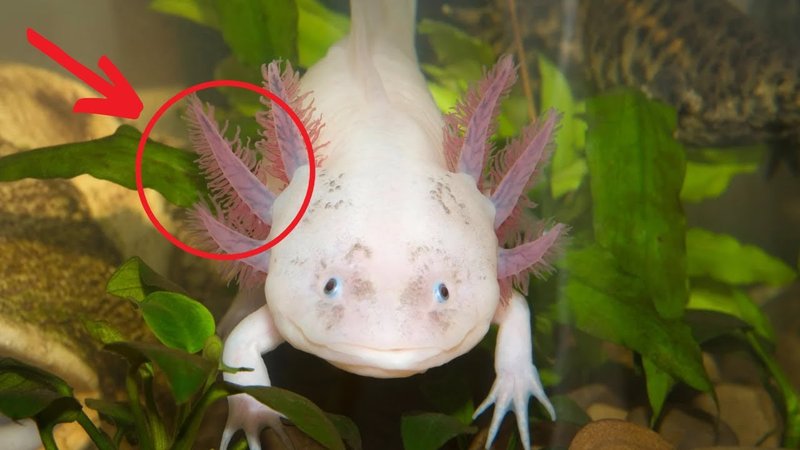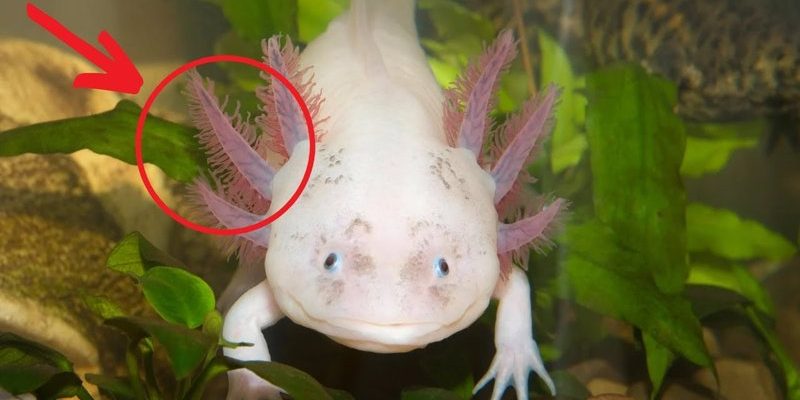
When you own an axolotl, it’s essential to understand their behaviors and physical traits. They don’t just float there like a piece of furniture; they have personalities, preferences, and, yes, symptoms of illness. So, let’s dive into the world of axolotl health and discover how to tell if your little buddy needs a helping hand.
Common Signs of Illness in Axolotls
Every pet has a unique way of showing they’re not feeling well. For axolotls, this can be a bit subtle at times. Here are some signs to watch for:
- Changes in Behavior: If your axolotl becomes lethargic and hangs around at the bottom of the tank, that might be a red flag. Healthy axolotls are usually curious and active, exploring their environment.
- Loss of Appetite: Axolotls love to eat! If yours suddenly stops gnawing on its favorite food, like worms or pellets, you’ll want to pay attention.
- Abnormal Swimming Patterns: Watch for erratic swimming or the inability to maintain a normal position in the water. This could indicate buoyancy issues or stress.
Here’s the thing—just like humans, axolotls can have off days. But if you notice these signs consistently, it’s worth looking deeper into potential health issues.
Physical Symptoms to Monitor
Besides behavioral changes, physical symptoms are telltale signs that something’s off with your axolotl. Here’s what to look for:
- Skin Changes: Look for discoloration or a slimy coating on the skin. Healthy axolotls have smooth and vibrant skin, so any change here is a cause for concern.
- Swelling or Bumps: If your axolotl develops noticeable lumps or swelling in any part of its body, it could indicate infection or other health troubles.
- Fins and Gills: Inspect the gills! If they are pale or clamped close to the body, this is often a sign of stress or poor water quality.
Monitoring these physical symptoms closely can help you catch problems early. It’s all about being proactive in your axolotl care!
Environmental Factors Impacting Axolotl Health
Axolotls are sensitive creatures, and their environment plays a huge role in keeping them healthy. Think of their tank as both their home and a sanctuary. Here are a few elements to keep in check:
- Water Quality: Poor water quality can lead to serious health issues. Regularly test the water for ammonia, nitrite, and nitrate levels to ensure they’re within safe ranges.
- Temperature: Axolotls thrive in cooler water, ideally between 60°F to 68°F. If the water is too warm, it can cause stress and lead to weakness or illness.
- Tank Mates: While axolotls can usually be kept with some other species, aggressive tank mates can cause stress or injury, leading to health problems.
Keeping a clean, stable environment is key to ensuring your axolotl stays happy and healthy.
How to Diagnose Potential Illness
So, you’ve noticed some signs, and you’re worried. What should you do next? Diagnosing your axolotl’s illness doesn’t have to feel overwhelming. Here’s how to approach it:
- Observe for Changes: Create a checklist of the signs you’ve seen. Is it behavior, appearance, or something about the tank? This information can be super helpful.
- Check Water Parameters: Testing kits are your best friend. Regular checks can help pinpoint issues that might be affecting your axolotl’s health.
- Consult a Vet: If you’re ever in doubt, a vet experienced with amphibians can provide insights and potential treatment options.
By being observant and taking action quickly, you can make a significant difference in your axolotl’s well-being.
Common Axolotl Diseases
Just like other pets, axolotls are susceptible to certain diseases. Here are a few common ones to be aware of:
- Ammonia Poisoning: This can occur if water conditions are poor—look for gasping or lethargy as key indicators.
- Infections: Bacterial or fungal infections can cause issues. Symptoms often include skin lesions or swollen gills.
- Parasites: If your axolotl is scratching against surfaces or has visible worms, it may be battling parasites.
Recognizing these diseases early can reduce stress for both you and your axolotl. Quick action often leads to better outcomes.
Steps to Take If Your Axolotl Is Sick
If you’ve reached this point and you feel worried about your axolotl, here’s a straightforward plan to follow:
- Quarantine: If you have another axolotl, it might be smart to isolate the sick one. This prevents any potential spread of illness.
- Monitor Water Quality: First step? Change water and test for toxins. Clean water can significantly aid your axolotl’s recovery.
- Consult a Vet: As mentioned earlier, never hesitate to seek professional advice. They can provide medications or treatment plans based on your axolotl’s specific needs.
Taking these steps can help ensure your axolotl gets the care it needs.
Preventative Care for a Healthy Axolotl
Prevention is always better than cure! Here are some easy tips to keep your axolotl thriving:
- Regular Tank Maintenance: Keep that tank clean! Regular water changes and filter maintenance can prevent many health issues.
- Balanced Diet: Feed your axolotl a varied and nutritious diet. Different foods can help keep them healthy and happy.
- Observe Behavior: Daily monitoring helps you catch any unusual behaviors early. It’s all about building a bond with your pet.
By focusing on preventative care, you can set your axolotl up for a long, healthy life.
In closing, keeping an eye on your axolotl for signs of illness is crucial. If you notice anything out of the ordinary—whether it’s behavior, appetite, or physical symptoms—take action. With a little care and attention, your axolotl can live a happy, healthy life. Honestly, there’s nothing like watching your aquatic friend thrive in a well-maintained environment!

